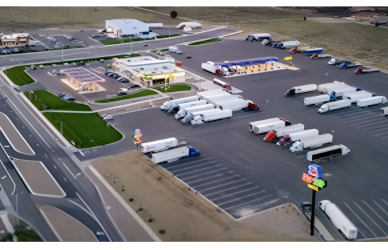Truck drivers are the lifeblood of the American economy, ensuring that goods are delivered across vast distances efficiently and on time. However, driving on the busiest truck routes in the U.S. presents a unique set of challenges that can make their job incredibly demanding. In this blog, we’ll explore some of the most significant obstacles truckers face on these high-traffic routes, focusing on specific major highways.
I-95: The East Coast Lifeline
Traffic Congestion: Running from Miami, Florida to Houlton, Maine, I-95 is one of the busiest highways in the U.S. It serves major metropolitan areas like Miami, Washington D.C., Philadelphia, New York City, and Boston. Traffic congestion is a constant issue, particularly in urban sections where trucks share the road with millions of commuters.
Regulatory Compliance: I-95 spans multiple states, each with its own regulations regarding weight limits and permits. Truckers must be adept at navigating these varying regulations to avoid fines and delays.
I-5: The West Coast Workhorse
Road Conditions: Stretching from the Mexican border in California to the Canadian border in Washington, I-5 is a critical route for goods moving up and down the West Coast. While California maintains many sections well, parts of Oregon and Washington can be challenging due to weather-related damage and ongoing construction.
Weather Hazards: Truckers on I-5 often contend with diverse weather conditions. Southern California sees heavy traffic and heat, while the Pacific Northwest can have heavy rain and fog, complicating driving conditions.
I-10: The Southern Connector
Traffic Congestion: I-10 runs from Santa Monica, California to Jacksonville, Florida, serving as a major east-west artery in the southern U.S. Congestion is especially problematic in cities like Los Angeles, Houston, and Phoenix.
Weather Hazards: This route is prone to severe weather, including hurricanes in the Gulf Coast region and intense heat in the southwestern desert areas. These conditions can cause significant delays and pose safety risks.
I-80: The Cross-Country Corridor
Road Conditions: I-80 spans from San Francisco, California to Teaneck, New Jersey, making it one of the longest interstate highways in the U.S. The route traverses various terrains, including the Sierra Nevada and the Rocky Mountains, where road conditions can be particularly challenging due to snow and ice in the winter months.
Health and Safety Concerns: The long, monotonous stretches of I-80 can lead to fatigue among truckers. Coupled with limited access to amenities, maintaining health and safety on this route is a significant concern.
I-70: The Midwest Passage
Road Conditions: I-70 stretches from Cove Fort, Utah to Baltimore, Maryland. The Midwest section of I-70 is notorious for rough road conditions, frequent construction zones, and unpredictable weather, all of which can cause delays and vehicle damage.
Technological Challenges: With the increasing reliance on Electronic Logging Devices (ELDs) and GPS, connectivity issues in rural areas along I-70 can disrupt schedules and increase stress for truckers.
Truckers on the busiest routes in the U.S. face an array of challenges ranging from traffic congestion and regulatory compliance to adverse weather conditions and health concerns. Specific routes like I-95, I-5, I-10, I-80, and I-70 each present unique obstacles that truckers must navigate daily. Despite these challenges, truckers continue to play a critical role in maintaining the flow of goods across the country.











